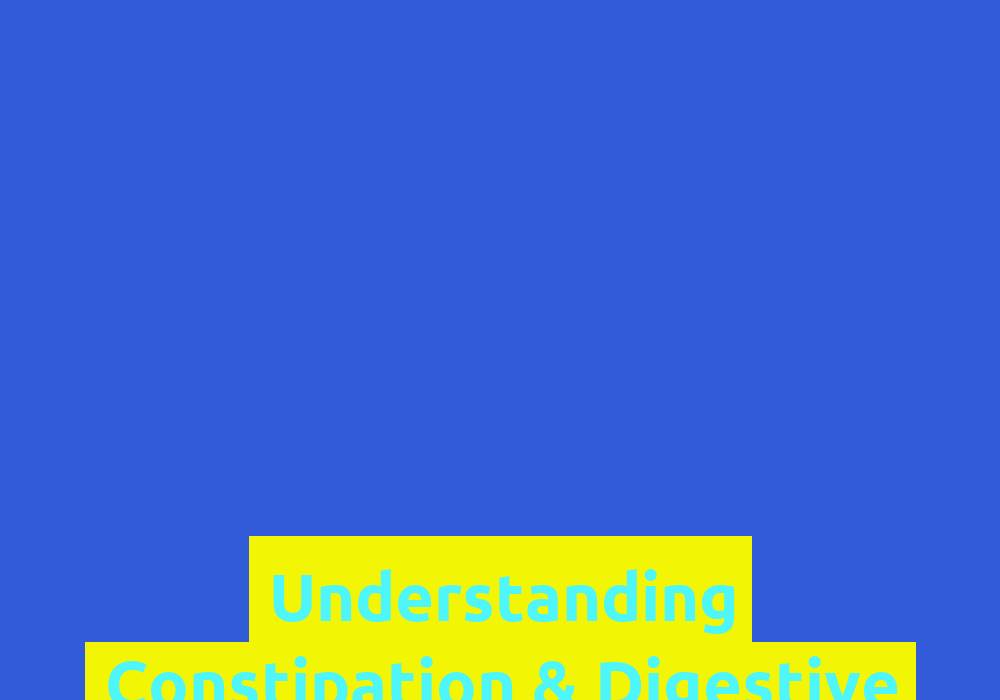
Regular health check-ups are crucial for maintaining a healthy lifestyle. When it comes to cardiovascular health, it becomes even more important to stay on top of screening tests and assessments. By being proactive and undergoing essential heart tests, you can detect potential issues early on and take preventive measures to keep your heart in top shape. In this article, we will discuss the essential tests for maintaining heart health and why they are important.
The Importance of Heart Health Tests
Heart disease remains one of the leading causes of death worldwide. Regular heart health tests can help identify risk factors, detect early signs of heart disease, and monitor existing conditions. By undergoing these tests, you can make informed decisions about your lifestyle, diet, and medication, if required. Early detection and appropriate management can significantly reduce the risk of heart attacks, strokes, and other cardiovascular complications.
Regular health check-ups play a vital role in maintaining overall well-being, and when it comes to cardiovascular health, they become even more crucial. Heart health tests are designed to assess the condition of your heart and identify any potential issues that may lead to cardiovascular diseases. By undergoing these tests, you can gain valuable insights into your heart’s health and take necessary measures to maintain or improve it.
Heart disease is a global health concern, affecting millions of people every year. In fact, it is one of the leading causes of death worldwide. However, many heart conditions can be managed or prevented through early detection and appropriate interventions. This is where heart health tests come into play. By regularly undergoing these tests, you can identify risk factors, detect early signs of heart disease, and monitor existing conditions. This enables you to make informed decisions about your lifestyle, diet, and medication, if required, to ensure the health and longevity of your heart.
Lipid Profile Test
A lipid profile test, also known as a cholesterol test, measures the levels of various types of cholesterol and fats in your blood. High levels of bad cholesterol (LDL) and triglycerides can increase the risk of heart disease. This test provides valuable information about your cholesterol levels and helps in determining the need for lifestyle changes or medication to control cholesterol.
A lipid profile test is a crucial tool in assessing heart health. It measures the levels of different types of cholesterol and fats in your blood, including LDL (bad) cholesterol and triglycerides. High levels of these substances can contribute to the development of atherosclerosis, a condition where fatty deposits build up in the arteries, restricting blood flow and increasing the risk of heart disease. By measuring your lipid profile, healthcare professionals can identify any abnormalities and determine whether you need to make changes to your diet, lifestyle, or medication to manage your cholesterol levels effectively.
In addition to measuring LDL cholesterol and triglycerides, a lipid profile test also provides information about HDL (good) cholesterol and total cholesterol levels. HDL cholesterol is considered “good” because it helps remove LDL cholesterol from the bloodstream, reducing the risk of plaque formation in the arteries. Total cholesterol is the sum of LDL, HDL, and other lipid components in your blood. By evaluating these different cholesterol levels, healthcare professionals can assess your overall cardiovascular risk and recommend appropriate interventions to maintain or improve heart health.
It is important to note that a lipid profile test is not a one-time test. Cholesterol levels can fluctuate, so regular monitoring is necessary to track changes and ensure the effectiveness of any interventions. Your healthcare provider can guide you on the recommended frequency of lipid profile testing based on your individual risk factors, such as age, family history, and existing medical conditions.
Blood Pressure Monitoring
Regular blood pressure monitoring is essential for assessing your heart health. High blood pressure, also known as hypertension, can strain the heart and increase the risk of heart attacks, strokes, and other cardiovascular problems. Measuring blood pressure at home using a blood pressure monitor or visiting a healthcare professional for regular check-ups can help guide treatment decisions and keep your blood pressure under control.
Blood pressure monitoring is a fundamental aspect of heart health assessment. High blood pressure, or hypertension, is a common condition that can significantly impact cardiovascular health. When blood pressure is consistently elevated, it exerts excessive force on the walls of the arteries, leading to damage and increasing the risk of heart attacks, strokes, and other cardiovascular complications.
Regular monitoring of blood pressure is crucial as it allows for early detection of hypertension and enables timely intervention. Measuring blood pressure at home using a blood pressure monitor is a convenient and effective way to keep track of your readings. This empowers you to take control of your heart health by monitoring changes in your blood pressure over time and identifying any concerning patterns or abnormalities.
In addition to self-monitoring, it is important to schedule regular check-ups with a healthcare professional to get accurate and comprehensive blood pressure measurements. A healthcare provider can assess your blood pressure levels, interpret the results, and guide you on the appropriate steps to control and manage hypertension. They may recommend lifestyle modifications, such as adopting a heart-healthy diet, increasing physical activity, reducing stress, and avoiding tobacco and excessive alcohol consumption. In some cases, medication may be prescribed to help lower blood pressure and reduce the risk of cardiovascular complications.
Overall, blood pressure monitoring is a vital component of heart health maintenance. By regularly assessing your blood pressure, you can identify any deviations from the normal range and take proactive steps to keep your heart healthy and reduce the risk of heart disease.
Electrocardiogram (ECG)
An electrocardiogram, commonly known as an ECG or EKG, records the electrical activity of your heart. It is a non-invasive test that can detect any irregularities in the heart’s rhythm or structure. This test is commonly used to diagnose abnormal heart rhythms, such as arrhythmias, and to assess the overall health of the heart muscle.
An electrocardiogram (ECG) is a painless and non-invasive test that measures the electrical activity of your heart. It records the electrical signals generated by the heart as it beats and translates them into a visual representation. By analyzing the ECG waveform, healthcare professionals can assess the rhythm and structure of your heart.
ECG is a valuable diagnostic tool for identifying abnormal heart rhythms, also known as arrhythmias. Arrhythmias can manifest as irregular heartbeats, rapid heartbeats, or skipped beats, and can be indicative of underlying heart conditions. By detecting these irregularities, an ECG helps healthcare professionals diagnose and manage arrhythmias, ensuring appropriate treatment and reducing the risk of complications.
In addition to diagnosing arrhythmias, an ECG can provide insights into the overall health of the heart muscle. It can detect signs of previous heart attacks, inadequate blood supply to the heart (ischemia), and structural abnormalities in the heart, such as an enlarged heart or thickened heart walls. These findings can guide further investigations and interventions to address any underlying heart conditions.
The ECG test itself is quick and painless. Electrodes are placed on the chest, arms, and legs, and these electrodes pick up the electrical signals produced by the heart. The results are then interpreted by a healthcare professional who can identify any abnormalities or irregularities. If necessary, additional tests or treatments may be recommended based on the ECG findings.
Overall, an ECG is a valuable tool for assessing heart health. By capturing the electrical activity of the heart, it provides crucial information about its rhythm and structure, aiding in the diagnosis and management of various heart conditions. Regular ECG screenings can help detect potential issues early on, allowing for timely interventions and improved heart health outcomes.
Stress Test
A stress test, also known as an exercise stress test or treadmill test, evaluates the heart’s performance during physical activity. This test involves walking on a treadmill or riding a stationary bike while your heart rate, blood pressure, and ECG are monitored. It helps assess the heart’s response to stress, diagnose coronary artery disease, and determine the appropriate level of physical activity for individuals with heart conditions.
A stress test is a valuable tool for evaluating the heart’s performance during physical activity. It involves monitoring various parameters, including heart rate, blood pressure, and ECG readings, while you engage in exercise, such as walking on a treadmill or riding a stationary bike. This test allows healthcare professionals to assess how well your heart responds to stress and exercise, providing insights into its overall function and identifying any potential issues.
One of the primary purposes of a stress test is to diagnose coronary artery disease (CAD). CAD occurs when the coronary arteries, which supply blood to the heart muscle, become narrowed or blocked due to the buildup of plaque. During a stress test, the increased demand for oxygen-rich blood during exercise can reveal any limitations in blood flow to the heart. This information helps healthcare professionals determine the presence and severity of CAD, guiding treatment decisions and interventions.
In addition to diagnosing CAD, a stress test can also help determine the appropriate level of physical activity for individuals with known heart conditions. By monitoring your heart’s response to exercise, healthcare professionals can tailor exercise programs to your specific needs, ensuring optimal cardiovascular health and minimizing the risk of complications.
During a stress test, the intensity of exercise gradually increases to progressively challenge your cardiovascular system. This allows healthcare professionals to observe how your heart responds to different levels of stress and identify any abnormalities or signs of inadequate blood flow. The test is usually stopped if you experience significant discomfort or if the results are conclusive enough to make a diagnosis.
Overall, a stress test is a valuable tool for assessing heart health, particularly in individuals at risk of CAD or those with existing heart conditions. By evaluating the heart’s response to exercise, it provides valuable insights into its function and helps guide treatment decisions and lifestyle recommendations.
Echocardiogram
An echocardiogram uses sound waves to create detailed images of the heart’s structure and function. It is a non-invasive test that provides valuable information about the heart’s chambers, valves, and pumping ability. An echocardiogram can help detect heart conditions such as heart valve problems, heart failure, and congenital heart defects.
An echocardiogram is a non-invasive imaging test that utilizes sound waves to create detailed images of the heart’s structure and function. It provides valuable information about the heart’s chambers, valves, and pumping ability, aiding in the diagnosis and management of various heart conditions.
During an echocardiogram, a healthcare professional applies a gel to the chest and then places a small device, called a transducer, on different areas of the chest. The transducer emits high-frequency sound waves that bounce off the structures of the heart, creating real-time images on a monitor. These images allow healthcare professionals to assess the size, shape, and movement of the heart’s chambers, as well as the functioning of the heart valves.
One of the key uses of an echocardiogram is in diagnosing heart valve problems. The test can identify conditions such as valve stenosis (narrowing) or regurgitation (leaking) and help determine the severity of these abnormalities. It also provides information about the overall functioning of the heart valves, enabling healthcare professionals to recommend appropriate treatment options or interventions.
In addition to heart valve problems, an echocardiogram can detect other heart conditions, such as heart failure and congenital heart defects. Heart failure occurs when the heart is unable to pump blood effectively, leading to symptoms such as shortness of breath, fatigue, and fluid retention. An echocardiogram can assess the heart’s pumping ability, evaluate the extent of heart muscle damage, and guide treatment decisions for heart failure patients.
For individuals with congenital heart defects, an echocardiogram is an essential tool for diagnosis and monitoring. It can visualize structural abnormalities in the heart that are present from birth, allowing healthcare professionals to provide appropriate care and interventions to manage these conditions effectively.
Overall, an echocardiogram is a valuable test for assessing heart health. It provides detailed images of the heart’s structure and function, enabling healthcare professionals to diagnose and monitor various heart conditions. By detecting and evaluating abnormalities, an echocardiogram helps guide treatment decisions and improve the overall management of heart health.
Cardiac CT Scan
A cardiac CT scan, also known as coronary computed tomography angiography (CCTA), uses X-ray technology to create detailed images of the heart and its blood vessels. It is primarily used to assess the presence of coronary artery disease, blockages, and calcium deposits in the arteries. This test can help determine the need for further intervention, such as angioplasty or bypass surgery.
A cardiac CT scan, also referred to as coronary computed tomography angiography (CCTA), is an advanced imaging technique that uses X-ray technology to create detailed images of the heart and its blood vessels. It provides valuable information about the presence and extent of coronary artery disease (CAD), a condition characterized by the buildup of plaque in the arteries that supply blood to the heart.
During a cardiac CT scan, a special dye, called a contrast agent, may be administered to enhance the visibility of the blood vessels. The scan captures multiple X-ray images from different angles, which are then reconstructed by a computer to create a three-dimensional image of the heart and its arteries. This allows healthcare professionals to assess the presence of blockages, narrowing, and calcium deposits in the arteries, which are indicative of CAD.
A cardiac CT scan can provide detailed information about the location and severity of any blockages or obstructions in the coronary arteries. This information is vital in determining the need for further intervention, such as angioplasty or bypass surgery, to restore adequate blood flow to the heart. It also helps healthcare professionals develop personalized treatment plans and provide appropriate recommendations for lifestyle modifications, medication, or other interventions.
In addition to diagnosing CAD, a cardiac CT scan can also assess the overall health of the heart and its structures. It can detect abnormalities in the heart valves, evaluate the size and function of the heart chambers, and identify any other structural anomalies that may contribute to cardiovascular problems.
It is important to note that a cardiac CT scan involves exposure to radiation, so its use should be carefully considered based on individual circumstances and the potential benefits outweighing the risks. Your healthcare provider will evaluate your specific situation and determine whether a cardiac CT scan is necessary and appropriate for you.
Blood Tests
In addition to the lipid profile test, several other blood tests can provide valuable information about heart health. These include tests for C-reactive protein (CRP), homocysteine, and other biomarkers associated with inflammation and increased cardiovascular risk. These tests help in assessing the overall health of your heart and provide additional insights into your risk for heart disease.
Blood tests play a crucial role in assessing heart health beyond cholesterol levels. They can provide valuable information about various biomarkers associated with inflammation, clotting, and increased cardiovascular risk. These tests help healthcare professionals assess the overall health of your heart and provide additional insights into your risk for heart disease.
One such blood test is the measurement of C-reactive protein (CRP) levels. CRP is a marker of inflammation in the body, and elevated levels may indicate an increased risk of heart disease. By measuring CRP, healthcare professionals can assess the level of systemic inflammation and determine appropriate interventions to reduce
FAQ
- What is a lipid profile test?
- A lipid profile test measures the levels of different types of cholesterol and fats in your blood, providing valuable information about your cholesterol levels and helping determine the need for lifestyle changes or medication to control cholesterol.
- Why is blood pressure monitoring important for heart health?
- Regular blood pressure monitoring is essential for assessing heart health as high blood pressure can strain the heart and increase the risk of heart attacks, strokes, and other cardiovascular problems. Monitoring blood pressure helps guide treatment decisions and keep blood pressure under control.
- What is an electrocardiogram (ECG)?
- An electrocardiogram (ECG) is a non-invasive test that records the electrical activity of the heart. It helps diagnose abnormal heart rhythms and assess the overall health of the heart muscle.
- What is the purpose of a stress test?
- A stress test evaluates the heart’s performance during physical activity and is used to diagnose coronary artery disease, determine the heart’s response to stress, and identify the appropriate level of physical activity for individuals with heart conditions.



















